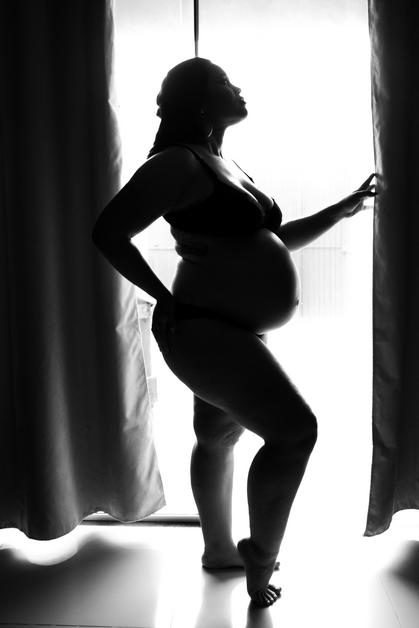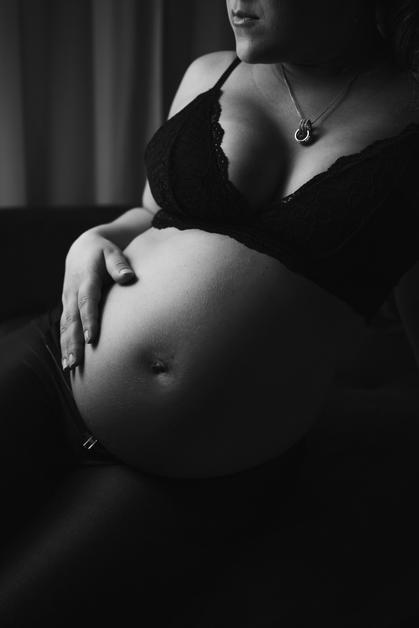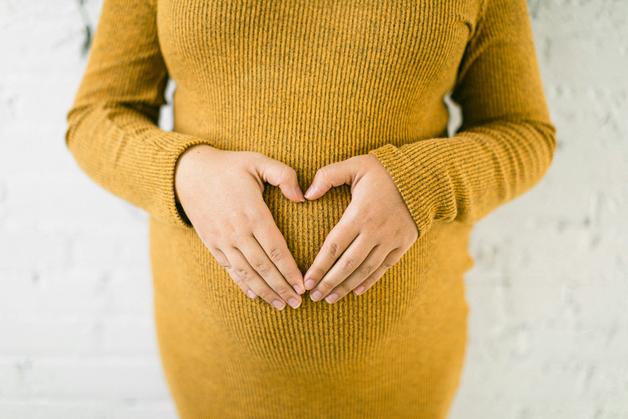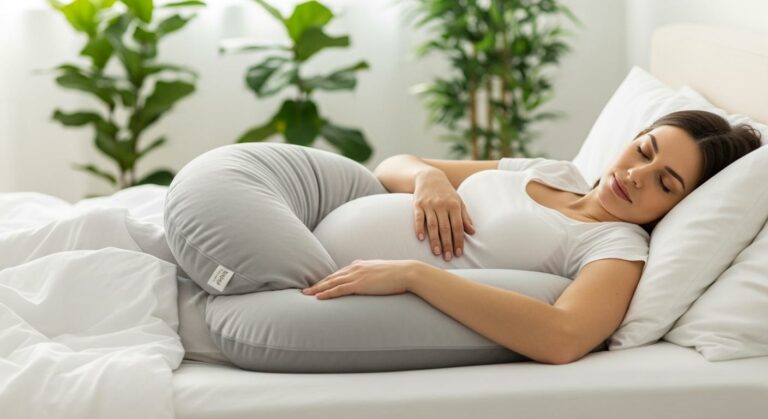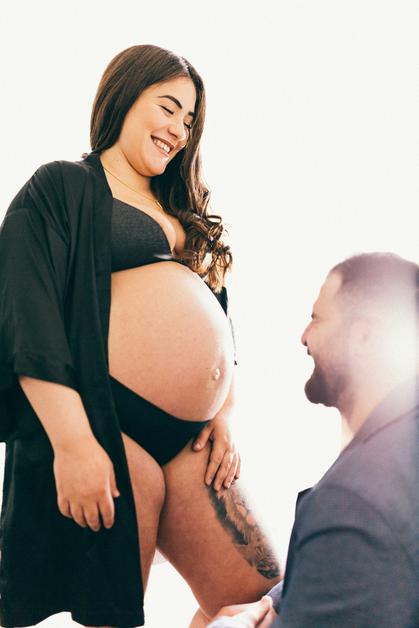Anyone who has experienced pregnancy knows that the human body can be full of surprises—some joyous, others perplexing, many simply overwhelming. If your steps feel heavy, your hips ache with every movement, or your sleep is disrupted by stabbing discomfort radiating through your pelvis, you might be facing what is medically recognized as pregnancy-related pelvic girdle pain. Far more than an ordinary ache, this syndrome can transform simple routines into burdens and test emotional resilience. How can you tell if this pain is just part of the natural journey, or when it demands particular attention? What factors set it apart from other discomforts—and, most importantly, what practical answers are within reach for relief, support, and hope? From hormones to muscles, belts to body mechanics, this overview provides a deep dive into the symptoms, causes, and strategies for reclaiming physical ease and emotional comfort—always with the wellbeing of both parent and baby in mind.
What Is Pregnancy-Related Pelvic Girdle Pain?
Pregnancy-related pelvic girdle pain is so much more than a technical term; for many expectant parents, it’s a daily companion. Imagine an intense, sometimes unpredictable pain localizing at the sacroiliac joints (those strong anchors between your spine and pelvis) or the symphysis pubis (a front-facing joint, just above the groin). Distinct from common low back pain, this condition centers its fury on the pelvic ring—a structure built to bear weight, but now under siege from hormonal tides and shifting biomechanics.
Relaxin and progesterone—two pregnancy-specific hormones—soften ligaments and trigger subtle instability in pelvic joints, expertly preparing the body for birth, yet, sometimes, they disrupt the stability that keeps pain at bay. As the uterus blossoms, posture changes dramatically: your center of gravity migrates forward, muscles recalibrate (sometimes unevenly), and the forces working across the pelvis increase.
Who is affected? Recent data shows that up to a quarter of all pregnant people encounter this discomfort. The severity ranges from a nagging throb to immobilizing pain—sometimes persisting after childbirth. While rarely dangerous for the baby, the toll on daily life, confidence, and the ability to savor these moments can be profound.
What Causes Pregnancy-Related Pelvic Girdle Pain?
Several interconnected forces are at play:
- Hormonal changes—the amazing choreography led by relaxin and progesterone—cause ligaments to become more elastic, especially those supporting the sacroiliac and symphysis pubis joints. Greater flexibility may mean less stability.
- Mechanical pressure evolves as the baby grows, pulling the pelvis into unfamiliar alignments and increasing asymmetric tension on the adductor muscles or hips.
- Muscle imbalances—the body shifts to protect itself. Weakness, hyperactivity, or misfiring of the pelvic floor, abdominal wall, and adductors can exacerbate the sensation of instability.
- Everyday stressors—lifting toddlers, going up stairs, standing for long stretches, or simply walking—can push sensitive joints into overload.
Past injuries, high BMI, multiple gestations, and personal musculoskeletal history also weigh in, shaping individual vulnerability.
Recognizing Pregnancy-Related Pelvic Girdle Pain: Signs and Sensations
How do you know if your pain fits the pregnancy-related pelvic girdle pain profile? Typically, the pain emerges in the second or third trimester—though it might appear sooner—and favors specific points: the symphysis pubis (front center), the sacroiliac joints (lower back), hips or even thighs.
Descriptions burst with variety: sudden stabbing shocks, dull aches, tingling, or a burning sensation sweeping across the groin, buttocks, or lower abdomen. Some even notice a “grinding” or “clicking” inside the pelvis—hallmarks of joint stress or, rarely, mild separation of the pubic symphysis (symphysiolysis).
Pain intensifies with daily acts: walking, climbing stairs, rolling in bed, or dressing—especially crossing legs. Even turning over at night requires strategy. Yet, unlike random ligament strains (transient, diffuse, and mild), pregnancy-related pelvic girdle pain is sharply focused and persistent, often interfering with even the simplest movements.
A severe, sudden loss of mobility—especially postpartum—can signal complications like frank pelvic separation. In such cases, immediate professional input is warranted.
Medical Assessment: How Is Pregnancy-Related Pelvic Girdle Pain Diagnosed?
A thoughtful consultation is the starting point. Clinicians will ask about pain patterns, previous injuries, impact on daily activities, and precise locations. The physical examination might include:
- Gentle probing and assessment of the pelvic joints and mobility of the lower limbs
- Joint irritation tests: P4, FABER, compression, and Gaenslen’s maneuver, each designed to localize pain
- Observing gait, rising from a chair, or turning in bed—capturing the full picture
Rarely, if symptoms are severe, or to rule out other issues (fractures, infection), an MRI offers sharp anatomical detail, without radiation risk.
Accurate diagnosis matters: other culprits (sciatica, generalized ligament pain, joint infection) can mimic or overlap with this syndrome.
Daily Challenges: The True Impact of Pregnancy-Related Pelvic Girdle Pain
The shadow cast by pregnancy-related pelvic girdle pain extends beyond physical hurt. Simple acts—getting out of bed, carrying groceries, chasing after older siblings—can become logistical puzzles. The requirement to plan, pause, or request help clashes with many parents’ desire for independence or their perceptions of “coping”.
Fatigue mounts as sleep fragments, emotions wobble under persistent discomfort, and a sense of isolation may creep in. Some find work adaption necessary—sitting for extended periods, prolonged standing, or even household chores may need to be reconsidered.
Sometimes, this pain feels like an invisible burden—one that reshapes routines, slows ambitions, but also, sometimes, brings unexpected reserves of resilience (and, yes, frustration).
Solutions and Management: Easing the Burden
Relief starts with a nuanced approach; the aim is to soothe pain while safeguarding mobility.
- First-line pain relief: Acetaminophen, supervised by a physician, can help. Non-steroidal anti-inflammatories are usually avoided due to pregnancy safety concerns.
- Activity pacing: Gentle movement—interspersed with rest—wins over strict bed rest. Think “listen to your body”, not “avoid all action”.
- Pelvic belts: These special supports stabilize the pelvis, reduce excessive motion, and help most during walking or standing. They can be transformative in daily routines.
- Heat and cold therapy: A warm compress can relax tense muscles, while an ice pack eases inflammation. Always protect your skin.
- Physiotherapy: Guided professional exercises focus on the pelvic floor, core, adductor group, and back muscles. Kegel exercises are especially helpful for pelvic stabilization.
- Osteopathy and acupuncture: These therapies, used by skilled practitioners familiar with pregnancy, can rebalance tensions and provide additional relief.
- Multidisciplinary input: When symptoms shift or persist, a team—including midwives, physicians, and physical therapists—offers flexible strategies tailored to individual progression.
Preventive Exercises and Motion: Key Techniques
A considered movement routine is both relief and prevention.
- Targeted strengthening: Focus on the pelvic floor, abdominals, and hip stabilizers to fortify the natural pelvic “brace.”
- Gentle stretching: Adductor and hamstring stretches, slow hip rotations, and side-lying “frog” poses on a yoga mat—all ease muscle pressure.
- Sleep adjustments: Place a pillow between your knees. This distributes pelvic pressure and soothes the symphysis pubis.
- Movement hygiene: No leg crossing when sitting. Stand or rise gradually. Allow extra moments for body transitions.
- Recommended activities: Prenatal yoga and aquatic fitness, like gentle water aerobics, provide buoyancy, take pressure off the pelvis, and encourage flexibility.
- Frequent position changes: Shift from sitting to standing, take brief walks, stop before discomfort escalates.
Collaboration with a physical therapist ensures activities match individual tolerance, preventing aggravation.
Extra Support Devices and Recovery Aids
While movement is essential, smart devices can optimize comfort:
- Pelvic belts: Typically worn daytime, these reduce unnecessary joint stress. Skirt-style or adjustable bands adapt to evolving body shapes.
- Heat and cold packs: Choose a soothing temperature. Warmth releases muscle tension; cold quells inflammation. Alternate as needed, always prioritizing safety.
- Balanced routines: Prioritize rest, quality sleep, and gentle daily movement. Sessions with a physiotherapist, osteopath, or acupuncturist may add extra benefit—explore what fits best for your comfort.
Possible Complications: When Does Pregnancy-Related Pelvic Girdle Pain Warrant Urgent Care?
Most cases ebb after birth, but sometimes pubic symphysis separation (symphysiolysis) occurs—a dramatic widening of the joint, bringing severe pain and difficulty walking. Additional medical support, tailored rest, or even a change in birth plan may be required.
After delivery, gradual rehabilitation focuses on pelvic alignment and restoring function—minimizing the risk of long-term discomfort.
Comprehensive Care and Medical Follow-Up
Ongoing oversight, individualized check-ins, and a spectrum of therapies set the scene for real improvement:
- Focused physiotherapy for muscle balance
- Manual therapy from an osteopath to optimize pelvic alignment
- Use of supportive devices, from belts to pillows
- Gentle aquatic exercise and relaxation techniques
- Carefully selected acupuncture, if suitable
After birth, restoring the pelvic floor and abdominal muscles, plus attention to movement mechanics, is key to regaining comfort and mobility.
Emotional Wellbeing: Coping Strategies for Body and Spirit
Physical pain and frustration often spill into mood and motivation. Self-care is not a luxury—pacing chores, prioritizing rest, and utilizing pain relief tools is a sign of strength. Open dialogue with your circle—loved ones, professionals, and others with shared experience—can be a powerful source of motivation and reassurance.
Techniques like deep breathing, mindfulness, and gentle movement (even pillow-supported yoga stretches) all help re-anchor emotional poise. Celebrating tiny milestones—walking to the kitchen without pain, or a restful night—matters.
And if the emotional impact persists, or discouragement clouds daily life? Professional support is entirely appropriate.
Prognosis: What Happens After Pregnancy?
Pregnancy-related pelvic girdle pain has an optimistic outlook. Most parents find pain quickly fades as hormones settle and ligaments regain strength after delivery. Yet, for those with pre-existing musculoskeletal sensitivity or severe pregnancy pain, chronic or recurrent issues can surface (affecting about one in ten).
Persisting with gentle rehabilitation and early professional guidance encourages resilience, speeds up pain resolution, and may reduce risk in subsequent pregnancies.
Research Frontiers: Evolving Perspectives
The scientific landscape is ever-shifting. Recent research underscores early, personalized strategies—home exercise, manual therapy, targeted muscle strengthening, and clear movement advice—at the core of successful management. Chiropractic care, aquatic therapy, and judicious use of imaging are gaining evidence, particularly when diagnosis remains uncertain. New guidelines champion pre-pregnancy fitness and prompt targeted care for those at risk.
Testimonials: Advice from Real Parents
Many recount sudden, intense pain, worsened by motion, and universally recommend pelvic support belts, sleeping with cushions, and alternating heat and cold packs. Gentle movement—never forced—also appears repeatedly as a tool for maintaining function and mood. Emotional support, whether from partners, friends, or healthcare providers, is vital.
Recovery, in most voices, comes swiftly after delivery. The recurring theme: tuning into your body’s limits, accepting help, and trusting in gradual improvement.
Key Takeaways
- Pregnancy-related pelvic girdle pain affects a significant proportion of expectant parents, generating discomfort that’s undeniable, but rarely tied to threatening complications.
- Individualized assessment—combining physical, emotional, and practical perspectives—sets the foundation for relief.
- Strategically alternating gentle exercise with rest, using support devices where needed, provides tangible benefits.
- Collaboration with physiotherapists, osteopaths, and medical providers ensures safety and adapts care as symptoms shift.
- Early intervention, comprehensive support, and an open-minded approach empower parents to recover with confidence.
- Practical tools and emotional strategies matter just as much as medical interventions.
- For ongoing advice and personalized care—including free child health questionnaires—parents can download the Heloa app for tailored guidance and resources.
Each experience of pregnancy-related pelvic girdle pain is unique, but compassionate, evidence-based care can turn this temporary challenge into another story of strength and adaptation.
Questions Parents Ask
When does pregnancy-related pelvic girdle pain usually start?
Pregnancy-related pelvic girdle pain can appear at any moment during pregnancy, but most often, symptoms begin between the 18th and 24th week. You might notice pain developing in the pelvic area and becoming more noticeable as the pregnancy progresses, especially with movements like walking or turning over in bed.
What can I do at home to relieve pelvic girdle pain during pregnancy?
Many parents find comfort in simple actions such as gentle massage or working on specific muscle points to ease tension. Resting while lying down—rather than sitting for long periods—can also help reduce pressure. Applying an ice pack to the painful area for about 20 to 30 minutes every few hours may provide relief. Don’t hesitate to use a pelvic support belt or compression garment if you feel it makes a difference in your daily routine.
Do I need to see a healthcare professional for pelvic girdle pain during pregnancy?
While home strategies can be very helpful, il est important to seek medical advice if the pain feels intense, lingers despite your efforts, or starts to limit your movement significantly. A healthcare professional, like a midwife or physiotherapist, can suggest personalized exercises, manual therapy, or other solutions adapted to your needs, ensuring both your wellbeing and your baby’s safety.
